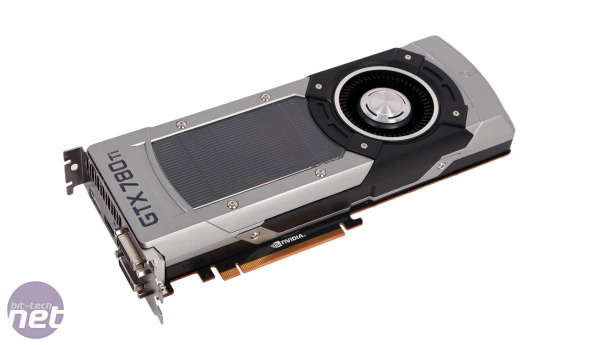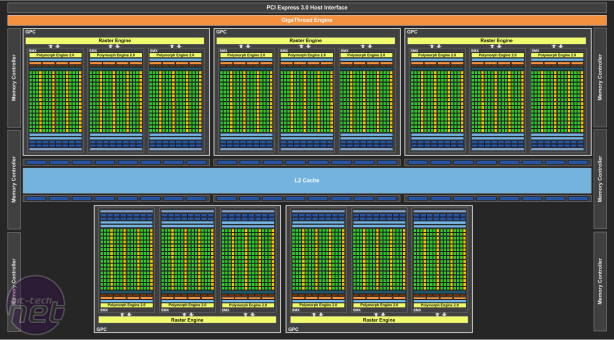
Nvidia GeForce GTX 780 Ti 3GB Review
Manufacturer: NvidiaUK price (as reviewed): MSRP £559 (inc VAT)
US price (as reviewed): MSRP $699 (ex Tax)
Announced almost out of nowhere less than a month ago, the Nvidia GeForce GTX 780 Ti is already here. It comes with the bold claim of being the best gaming GPU on the planet, and as you'd expect, such a card comes with a hefty cost; it's entering the UK market at £559, and the US one at $699. This makes the GTX 780 Ti about £120 more expensive than AMD's top-end single GPU card, the R9 290X, and £160 more than the GTX 780.
Softening the financial blow a little are free copies of Assassin's Creed IV: Black Flag, Batman: Arkham Origins and Splinter Cell Blacklist that will be bundled with all GTX 780 Ti purchases, while US customers can also enjoy $100 off the Nvidia Shield.
Like the GTX Titan and GTX 780, the GTX 780 Ti is built on Nvidia's GK110 GPU (which you can read about more in our original GTX Titan review). Built on a 28nm process, this version of the 7.1 billion transistor GPU is the most powerful iteration of GK110 available to consumer customers, as the disabled streaming multiprocessor (SMX) of GTX Titan is no longer inactive for the GTX 780 Ti. As such, all five of its graphics processing clusters (GPCs) sport the full roster of three SMXs. The GTX 780 Ti is thus equipped with 2,880 streaming processors (192 per SMX), which is 25 percent and 7 percent more than the GTX 780 and GTX Titan respectively.
The extra SMX also graces the GTX 780 Ti with an extra tesselation unit over the GTX Titan thanks to the additional polymorph engine, as well as 16 more texture units, for a grand total of 240. The card matches the GTX Titan for rasteriser and ROP counts, which are 5 and 48 respectively.
As ever, Nvidia specifies a base clock for the GTX 780 Ti, which is the minimum speed the card is guaranteed to run at. This is unlike AMD, as clock speeds for the R9 290X and R9 290 are presented as 'up to' i.e. the maximum clock users will see given the right conditions. The GTX 780 Ti's base clock is 876MHz, a modest 40MHz increase over both the GTX 780 and Titan. The boost clock, which represents the sort of frequencies you can expect to hit under load as a result of GPU Boost, is 928MHz, but our sample regularly hit 1GHz at stock speeds.
| Nvidia GeForce GTX 780 Ti 3GB | Nvidia GeForce GTX Titan 6GB | Nvidia GeForce GTX 780 3GB | Nvidia GeForce GTX 680 2GB | |
| GPU | ||||
| Codename | GK110 | GK110 | GK110 | GK104 |
| Base Clock | 876MHz | 836MHz | 863MHz | 1,006MHz |
| Boost Clock | 928MHz | 876MHz | 900MHz | 1,058MHz |
| Stream Processors | 2,880 | 2,688 | 2,304 | 1,536 |
| Layout | 5 GPCs, 15 SMXs | 5 GPCs, 14 SMXs | 4 GPCs, 12 SMXs | 4 GPCs, 8 SMXs |
| Rasterisers | 5 | 5 | 4 | 4 |
| Tesselation Units | 15 | 14 | 12 | 8 |
| Texture Units | 240 | 224 | 194 | 128 |
| ROPs | 48 | 48 | 48 | 32 |
| Transistors | 7.1 billion | 7.1 billion | 7.1 billion | 3.54 billion |
| Die Size | 533mm2 | 561mm2 | 551mm2 | 294mm2 |
| Process | 28nm | 28nm | 28nm | 28nm |
| Memory | ||||
| Amount | 3GB GDDR5 | 6GB GDDR5 | 3GB GDDR5 | 2GB GDDR5 |
| Frequency | 1.75GHz (7GHz Effective) | 1.5GHz (6GHz Effective) | 1.5GHz (6GHz Effective) | 1.5GHz (6GHz Effective) |
| Interface | 384-bit | 384-bit | 384-bit | 256-bit |
| Bandwidth | 336GB/sec | 288GB/sec | 288GB/sec | 192GB/sec |
| Card Specifications | ||||
| Power Connectors | 1 x 6-pin, 1 x 8-pin PCI-E | 1 x 6-pin, 1 x 8-pin PCI-E | 1 x 6-pin, 1 x 8-pin PCI-E | 2 x 6-pin PCI-E |
| Stock Card Length | 267mm | 267mm | 267mm | 257mm |
| TDP | 250W | 250W | 250W | 195W |
| Typical Street Price | £560 | £770 | £400 | £240 |
A new power management feature for the GTX 780 Ti related to clock speeds and overclocking in particular is called Power Balancing. A card like the GTX 780 Ti draws power across three rails: the PCI-Express lane and the two additional PCI-E power connections. Power is balanced between the three but can become unbalanced when overclocking and possibly limit your overclocks if you max out one rail while having headroom elsewhere. Power Balancing simply allows the balance to be maintained when overclocking, potentially allowing for higher overclocks than previous GK110 cards, on top of the already higher clock speeds.
As well as a 1.5MB local L2 cache, the GTX 780 Ti GPU also has access to 3GB of GDDR5 memory, clocked at a speedy 1.75GHz (7 GHz effective). As such, the card features less RAM than the GTX Titan, but has memory chips that are effectively 1GHz faster than both it and the GTX 780. Combined with its six 64-bit memory controllers (384-bit bus), the GTX 780 Ti also has the highest total memory bandwidth of any card on the market, with 336GB/sec.
Despite the increased processing power and clock speeds compared to GTX Titan, said card will not be receiving a price cut or going end of life. With its full speed double precision units and 6GB of memory, Nvidia is leaving Titan to researchers and such who value compute power above all else, while positioning the GTX 780 Ti as the best card available from a gaming perspective at a more realistic, although undoubtedly still high, price point.
Other features worth mentioning are ShadowPlay and G-Sync, although these aren't unique to the GTX 780 Ti. ShadowPlay is a piece of gameplay recording software currently in beta (available through Nvidia's GeForce Experience program) that utilises the H.264 encoder built into all Kepler GPUs to record your gameplay up to 1080p at 60fps. It supports all DX9 or later games and apparently has less performance impact than other such recorders like FRAPS.
G-Sync, meanwhile, is a new monitor hardware technology designed to eliminate the screen tearing and input lag that results from using displays with fixed refresh rates. We came away thoroughly impressed from the demo we saw, and all Nvidia cards from the GTX 650 Ti Boost upwards support it. You will have to buy a new compatible monitor to take advantage of it, though.

MSI MPG Velox 100R Chassis Review
October 14 2021 | 15:04











Want to comment? Please log in.